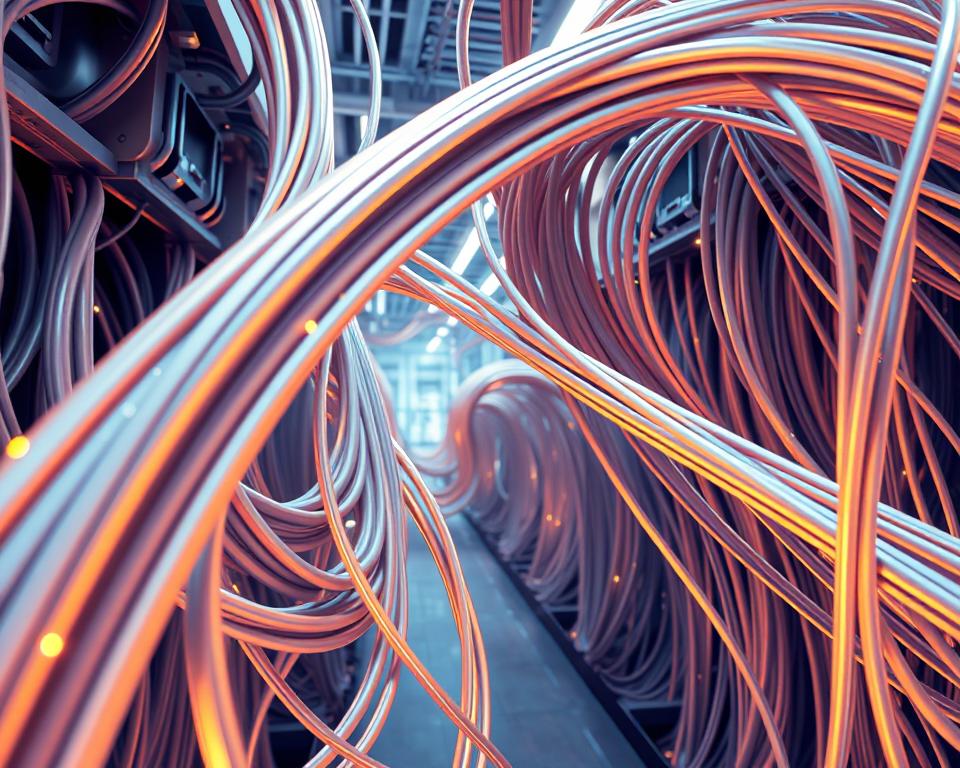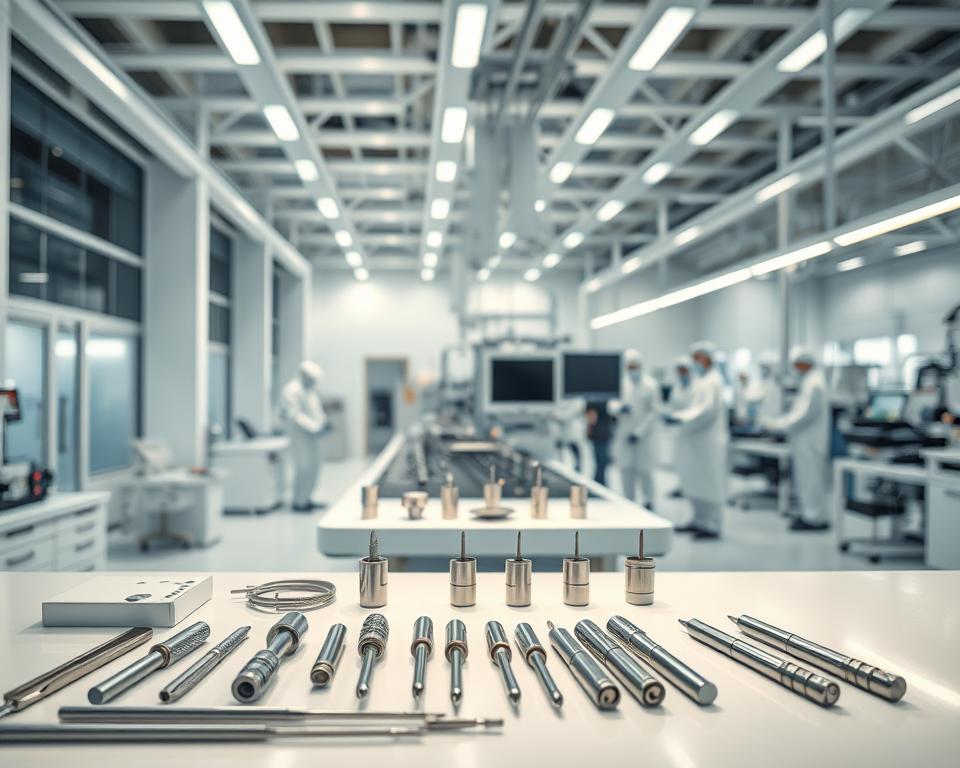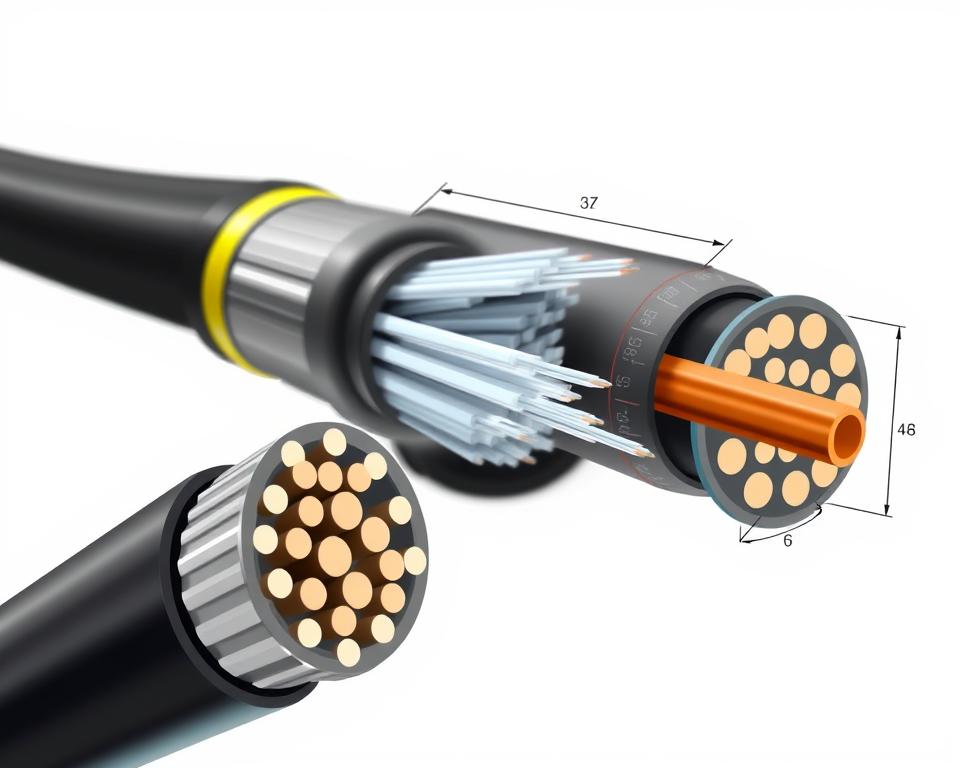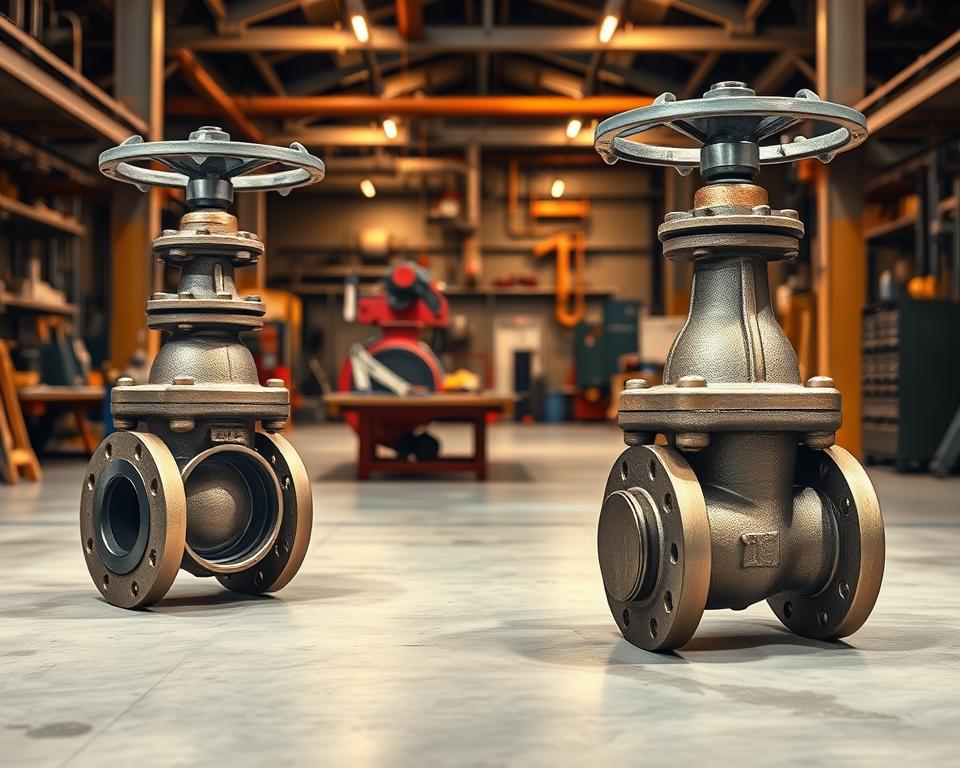High-Performance Fiber-to-the-Home Cable Fabrication Line Gear Offerings
Ever pondered the impact of soaring internet cable demand on FTTH cable production technology? As our need for high-speed, reliable connectivity rising, manufacturers like HONG KAI and Nextrom are reshaping the manufacturing landscape. They are introducing next-generation cable equipment to improve production efficiency. Not only does this shift cut operational costs but also upgrades high-speed internet cable quality, meeting today’s market standards.
In this article, we’ll explore the pioneering equipment and methods transforming FTTH cable production line manufacturing. See how these advancements are set to transform the fiber optic sector.
Essential Summaries
- Understanding the importance of FTTH cable production line equipment in high-speed internet access.
- Exploring the significant role of companies like HONG KAI and Nextrom in driving technology innovation.
- Learning the benefits of adopting next-gen cable equipment in manufacturing processes.
- Recognizing how enhanced cable quality is essential for meeting consumer demands.
- Appreciating the importance of production efficiency in a competitive market.
Understanding FTTH Cable Production Line Technology
The manufacturing of fiber optic cables, primarily for FTTH technology, involves a complex blend of state-of-the-art tools and exact methods. Contemporary production of these cables includes various components that improve efficiency and quality. Knowing these elements sheds light on the progress toward more advanced production systems.
Core Components of Contemporary Fiber Optic Cable Manufacturing
Today’s fiber optic cable production includes:
- Extruder systems for coating and insulating fibers
- Fiber tension control mechanisms to maintain optimal fiber quality
- Automated operations that streamline production processes
These elements work together to produce a reliable and long-lasting product. For instance, state-of-the-art temperature control systems ensure consistent conditions. Automated adjustments also minimize human error.
Evolution from Traditional to Modern Production Systems
The shift from legacy to advanced systems marks a major leap in technology and methods. Earlier, manual methods have been replaced by robotic systems. This change has resulted in:
- Higher productivity and shorter production times
- Reduced waste due to accurate material handling
- Better product quality thanks to stricter quality control
Key Technologies Driving Industry Innovation
Several key technologies are propelling innovation in the fiber optic field. These include:
- Precision temperature control that regulates and maintains optimal production conditions
- Automatic settings that adapt to varying production requirements
- Advanced monitoring systems providing real-time feedback on production quality
Thanks to these technologies, manufacturers can guarantee their fiber optic products meet the stringent standards required for FTTH applications.
Essential Equipment for Fiber Secondary Coating Line Operations
In the world of fiber optic cable manufacturing, the fiber secondary coating line is key. It protects fiber optics through efficient coating processes. As technology evolving, having the latest equipment is critical for optimal production and reliability.
High-Speed Secondary Coating Processes
Advances in secondary coating processes have dramatically improved manufacturing efficiency. Contemporary systems can now handle greater volumes, meeting rising demand. They apply coatings that boost durability and performance, resulting in top-tier fiber cable products.
Single and Dual Layer Coating Applications
It’s essential to know between single and dual layer coatings in the fiber secondary coating line. Single-layer coatings provide basic protection, while dual-layer coatings add extra resistance to environmental stressors. Both methods use high-speed processes for uniform coating application, guaranteeing fiber optics last longer in various conditions.
Temperature Control and Curing Systems
Temperature control systems are vital for curing coatings during production. They maintain the right conditions for adhesive substances in the fiber secondary coating line. Accurate temperature management allows for ideal curing times and conditions, resulting in enhanced quality fibers ready for real-world use.
Fiber Draw Tower and Optical Preform Processing
The fiber draw tower is central in optical preform processing and cable manufacturing. It draws the preform into thin fiber strands, guaranteeing superior fibers with exceptional clarity and strength. The tower’s ambiance is carefully controlled to achieve precise dimensions and physical properties.
Optical preforms serve as the foundation of this process, defining the fiber’s final characteristics. The preform’s quality affects light transmission and durability. Advances in preform manufacturing have improved fiber draw tower manufacturing efficiency.
Through advanced engineering and technology, the fiber draw tower and preform processing constantly evolve, addressing the growing demand for high-performance fiber optic cables. Excellence at the preform level yields better fiber optics, improving telecommunications and networking services.
Advanced SZ Stranding Line Technology for Cable Assembly
The SZ stranding line technology marks a major advancement in cable assembly, particularly for fiber optic cables. It ensures precise stranding, vital for crafting top-tier cables that adhere to strict standards.
Precision Stranding Equipment Features
The core of the SZ stranding line is its precision stranding equipment, which enhances cable durability and reliability. Its notable attributes include:
- Advanced control systems that fine-tune settings in real-time for peak performance.
- High-speed operation that boosts production efficiency.
- Modular design for customization based on production needs.
Automated Tension Control Systems
Automated tension control systems are critical for maintaining consistency in stranding. They:
- Guarantee uniform fiber tension and strength distribution along the cable.
- Reduce defect rates, cutting down on waste and production costs.
- Allow seamless integration of diverse materials, enhancing flexibility and performance.
Integration with Fiber Cable Sheathing Line
Integrating the SZ stranding line with the fiber cable sheathing line enhances production efficiency. This synergy allows for:
- Efficient workflows by reducing manual intervention.
- Consistent quality throughout the manufacturing process.
- Higher throughput, meeting the growing need for superior cables.
Fiber Coloring Machine and Identification Systems
The fiber coloring machine is essential in telecom fiber cable production. It ensures each cable is identifiable and meets color coding standards. Advanced technology enables quick and accurate color application, boosting manufacturing efficiency.
High-Speed Coloring Technology
State-of-the-art machines use high-speed technology for consistent and fast color application. This cuts production time without compromising quality. The machines’ precision secures accurate color application, helping adherence to strict color coding standards, essential for smooth installation and maintenance.
Color Coding Standards for Telecom Fiber Cables
Color coding standards guide manufacturers and technicians in the telecom industry. They systematize fibers for easy identification, minimizing installation and troubleshooting errors. Each color denotes a specific function or fiber type, ensuring clarity in complex networks.
Adhering to these standards, enabled by fiber coloring machines, improves safety and efficiency—a cornerstone of telecom operations.
Quality Control in Fiber Identification
Quality control is paramount in fiber identification systems to satisfy market standards. Routine inspections during production check color accuracy and coding adherence. Sophisticated traceability systems track fibers, boosting product reliability.
This systematic quality control approach yields superior telecom fiber cable performance, satisfying both manufacturers and end users.
Specialized Solutions for Fibers in Metal Tube Production
The production of fibers in metal tubes is a key domain in modern cable solutions. This method enhances durability and environmental resistance of optical cables, rendering them ideal for demanding conditions. Expert techniques envelop fibers in metal, protecting them from damage and extreme environments.
In outdoor settings, where cables face tough elements, these solutions demonstrate their worth. Manufacturers have developed advanced methods to fortify and boost cable reliability, addressing the growing demand for durable communication systems. Precision fiber secondary coating line engineering and premium materials are integral in this process.
Employing specialized manufacturing methods guarantees cables remain intact and reliable across industries. Companies focus on innovative designs and strong materials to create top-tier optical cables for diverse environments and applications.
Fiber Ribbon Line and Compact Fiber Unit Manufacturing
The creation of fiber ribbons and compact fiber units is vital for modern telecommunication networks. This section explores the latest equipment and designs for these essential components. Innovators aim to meet the rising demand for high-density cable solutions in data centers.
Advanced Fiber Ribbon Line Equipment
Cutting-edge fiber ribbon line equipment enables efficient production of high-quality optical fibers. It integrates the latest technology to produce compact fiber units with outstanding performance, reducing waste and improving throughput to suit various needs.
Compact Fiber Unit Design and Production
Compact fiber units are designed for space efficiency without sacrificing performance. Innovative methods form these units for easy installation in diverse settings. These units are indispensable for data centers, addressing the need for dense cables that save space and speed up data transfer.
High-Density Cable Solutions for Data Centers
High-density cable solutions are critical for modern data centers, enabling faster data transfer and greater bandwidth. These solutions often incorporate fiber ribbons, manufactured through advanced processes. As data usage surges, these cables support robust infrastructure to meet today’s digital demands.
Optimizing High-Speed Internet Cables Production
Efficient production of high-speed internet cables is fundamental for today’s networks. The quality of FTTH cabling systems drives reliable connections. State-of-the-art manufacturing aims to improve performance while maintaining high standards.
Cabling Systems for FTTH Applications
FTTH cabling systems include designs that enhance signal transmission and cable longevity. They utilize premium materials and cutting-edge engineering to deliver fast, dependable internet for users.
Quality Assurance in Fiber Pulling Process
The fiber pulling process is critical in cable production, requiring precise attention. Quality checks avoid damage and maintain signal integrity. Integrated monitoring systems guarantee cable reliability and facilitate seamless installation.
Meeting Industry Standards for Optical Fiber Drawing
Adhering to industry standards in optical fiber drawing is vital for manufacturers. It guarantees production safety and cable reliability. Improving techniques and materials helps meet these standards, resulting in superior cabling systems.
In Summary
The evolution of FTTH cable production lines has transformed telecommunications, allowing manufacturers to produce high-quality, reliable cables for today’s internet demands. As technology progresses, adopting advanced manufacturing solutions is essential to improve production efficiency while upholding top standards.
With the ever-increasing need for robust infrastructure, companies must adopt innovative methods in their FTTH cable production. These modern approaches improve cable reliability and support sustainable manufacturing in the fiber optic sector.
To stay competitive in the fiber optic cable industry, embracing these advanced solutions is critical. The future of cable production hinges on such innovations, ensuring telecommunications infrastructure can meet the growing global internet demands.



